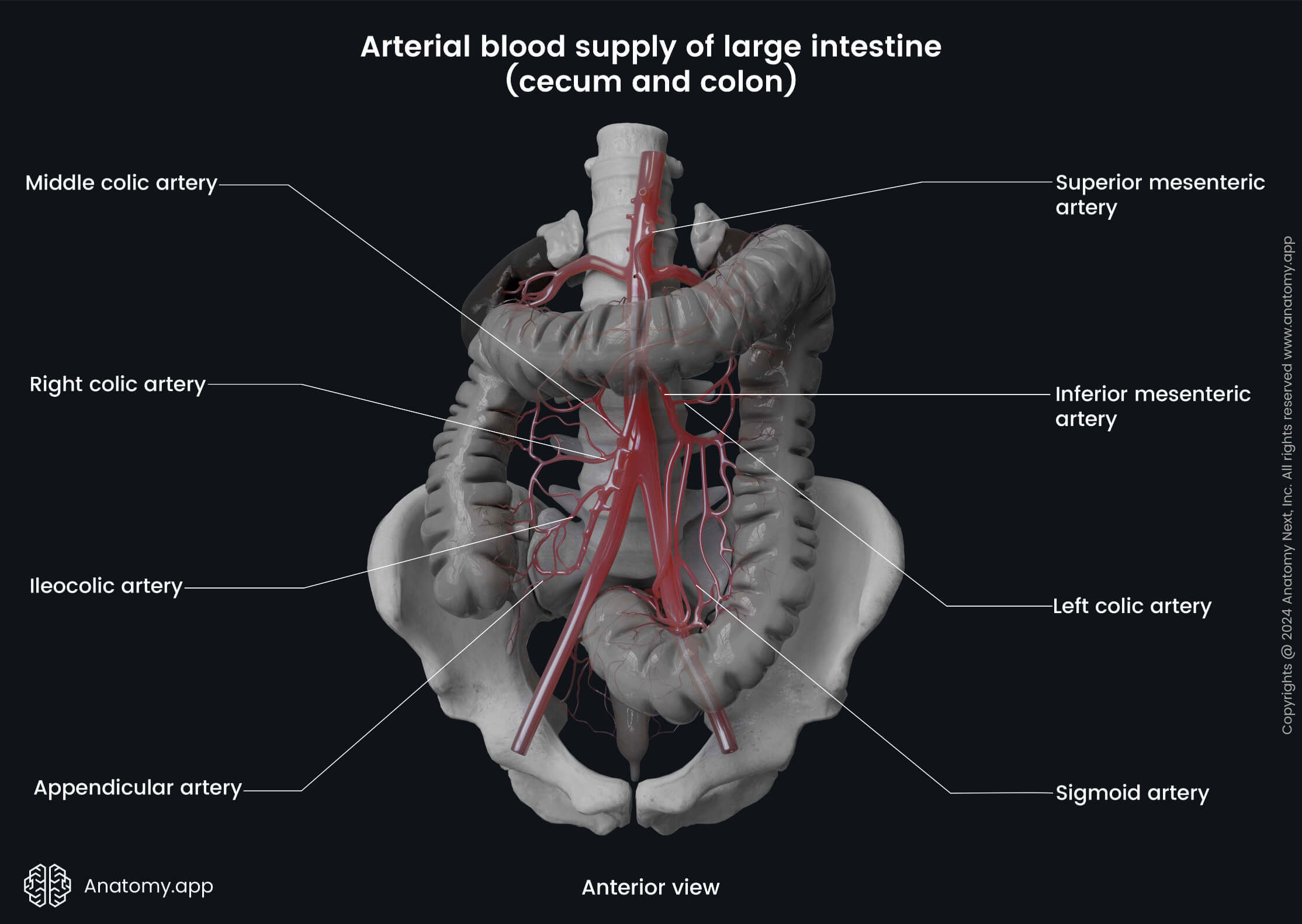- Anatomical terminology
- Skeletal system
- Joints
- Muscles
- Heart
- Blood vessels
- Blood vessels of systemic circulation
- Aorta
- Blood vessels of head and neck
- Blood vessels of upper limb
- Blood vessels of thorax
- Blood vessels of abdomen
- Blood vessels of pelvis and lower limb
- Blood vessels of systemic circulation
- Lymphatic system
- Nervous system
- Respiratory system
- Digestive system
- Urinary system
- Female reproductive system
- Male reproductive system
- Endocrine glands
- Eye
- Ear
Superior mesenteric artery
The superior mesenteric artery (Latin: arteria mesenterica superior) is a blood vessel that arises from the anterior surface of the abdominal aorta. With its branches this artery supplies oxygenated blood to the intestines and pancreas. The superior mesenteric artery supplies the following parts of the intestines: distal half of the descending part of the duodenum, the horizontal and ascending parts of the duodenum, the jejunum and ileum, the ascending colon, and the proximal two-thirds of the transverse colon.
The artery arises anteriorly from the abdominal aorta just below the origin of the celiac trunk, anterior to the lower part of the 1st lumbar vertebra (L1). At first, the superior mesenteric artery travels to the front and downward, passing behind the neck of the pancreas and the splenic vein. After passing the neck of the pancreas, the artery gives rise to several branches.
The first branch arising from the superior mesenteric artery is the inferior pancreaticoduodenal artery. Further, the superior mesenteric artery gives off jejunal and ileal arteries on its left side. Three branches arise from the right side of the artery, and they are the middle colic, right colic, and ileocolic arteries. These branches supply the terminal ileum, cecum, ascending colon, and the proximal two-thirds of the transverse colon.

Anteriorly, the superior mesenteric artery is crossed by the splenic vein and the neck of the pancreas. Posterior to the artery lies the left renal vein, the uncinate process of the pancreas, and the ascending part of the duodenum. Typically, the superior mesenteric artery runs on the left side of the superior mesenteric vein.